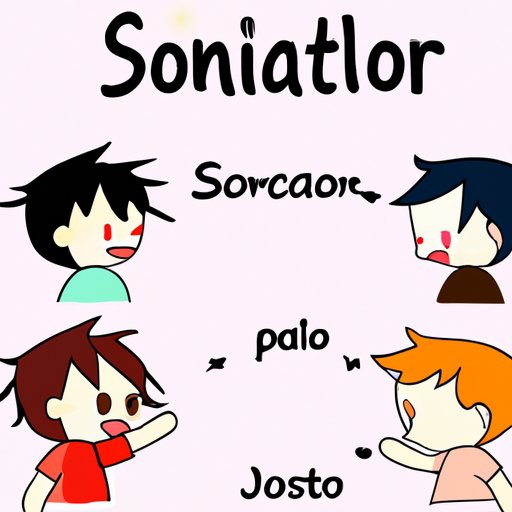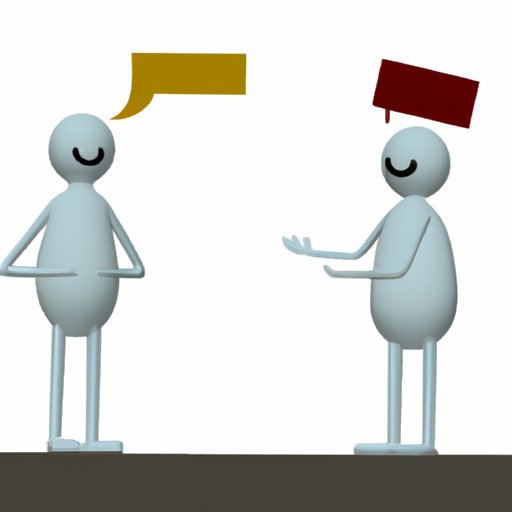Introduction
Writing a short story can be a daunting task, but when done right, it can be incredibly rewarding. Knowing where to start can make all the difference between writing a captivating story and one that falls flat. In this article, we’ll explore some tips, examples, and resources to help get you started writing your own short story.
Start with an Unexpected Event
Starting with an unexpected event is a great way to engage readers from the very beginning. It could be something as small as a character spilling coffee on their shirt or as big as a natural disaster. By creating an unexpected event, you can grab your readers’ attention and set up the rest of your story.
For example, you might start your story with a sentence like, “The sun was shining brightly as Helen stepped out of her car, never expecting what would happen next.” Here, the reader knows something unexpected is about to occur, which piques their curiosity and encourages them to keep reading.

Begin with a Vivid Description of a Scene
Creating a vivid setting can help set the tone for your story and draw readers in. Focus on creating a detailed image in the reader’s mind by incorporating sensory details such as sight, sound, smell, taste, and touch. You can also use figurative language and descriptive adjectives to create a vivid scene.
For example, you might start your story with a sentence like, “The air was thick with the smell of smoke, the sky a murky shade of grey.” This sentence immediately paints a picture in the reader’s mind and sets the tone for the story.

Introduce the Protagonist and Their Conflict Early
Introducing the protagonist and their conflict early on can help draw readers in and give them an understanding of what the story will be about. The protagonist should be introduced in a way that provides insight into their motivations and goals. The conflict should be introduced in a way that leaves the reader wanting to know more.
For example, you might start your story with a sentence like, “John had been dreaming of sailing around the world since he was a child, and now he was determined to make his dream a reality no matter the cost.” Here, the reader gets a sense of who John is and what he’s striving for, which can help draw them in and keep them engaged.
Establish the Setting and Time Period
Setting the scene can help readers to understand the story and the characters within it. When establishing the setting, focus on providing details about the location, time period, and culture. You don’t have to provide too many details—just enough to give readers a sense of the setting.
For example, you might start your story with a sentence like, “It was a sunny day in June, and the streets of Paris were bustling with tourists.” Here, the reader gets a sense of the setting and the time period, which can help them better understand the story.

Begin with a Conversation Between Two Characters
Starting with a conversation between two characters can provide insight into the plot and help draw readers in. Focus on creating dialogue that reveals something about the characters and the situation they are in. You can also use dialogue to set up the conflict and introduce important plot points.
For example, you might start your story with a conversation like, “‘I can’t believe you’re doing this,’ she said, her voice shaking with anger. ‘You know I won’t let you get away with it.'” Here, the reader gets a sense of the conflict between the two characters and is left wondering what the story is about.
Start with an Intriguing Question or Statement
Starting with an intriguing question or statement can help capture readers’ attention and set up the rest of the story. Focus on crafting a question or statement that will leave readers wanting to know more. You can also use rhetorical questions or statements to create tension and suspense.
For example, you might start your story with a sentence like, “How far would you go to save someone you love?” Here, the reader is presented with an intriguing question that will leave them wanting to know more.
Conclusion
Writing a short story can be intimidating, but with the right tips and examples, you can easily create an engaging story. In this article, we explored tips on how to start a short story, as well as examples and resources for further exploration. We discussed why it’s important to start with an unexpected event, begin with a vivid description of a scene, introduce the protagonist and their conflict early, establish the setting and time period, begin with a conversation between two characters, and start with an intriguing question or statement.
For more resources on writing a short story, check out The Write Life, The New York Times, and Writer’s Digest.
(Note: Is this article not meeting your expectations? Do you have knowledge or insights to share? Unlock new opportunities and expand your reach by joining our authors team. Click Registration to join us and share your expertise with our readers.)
